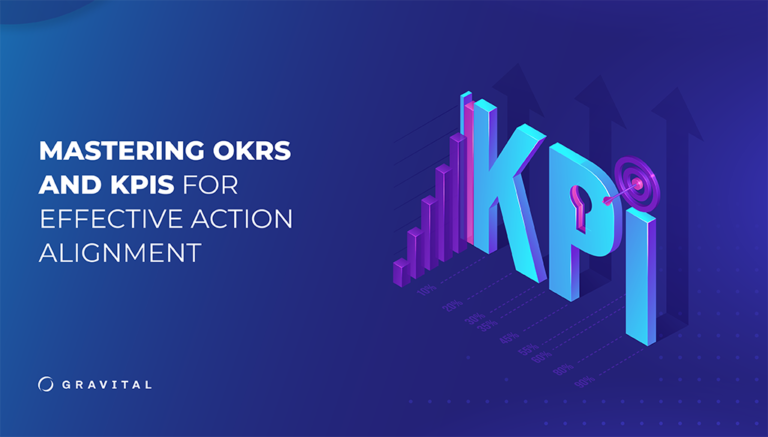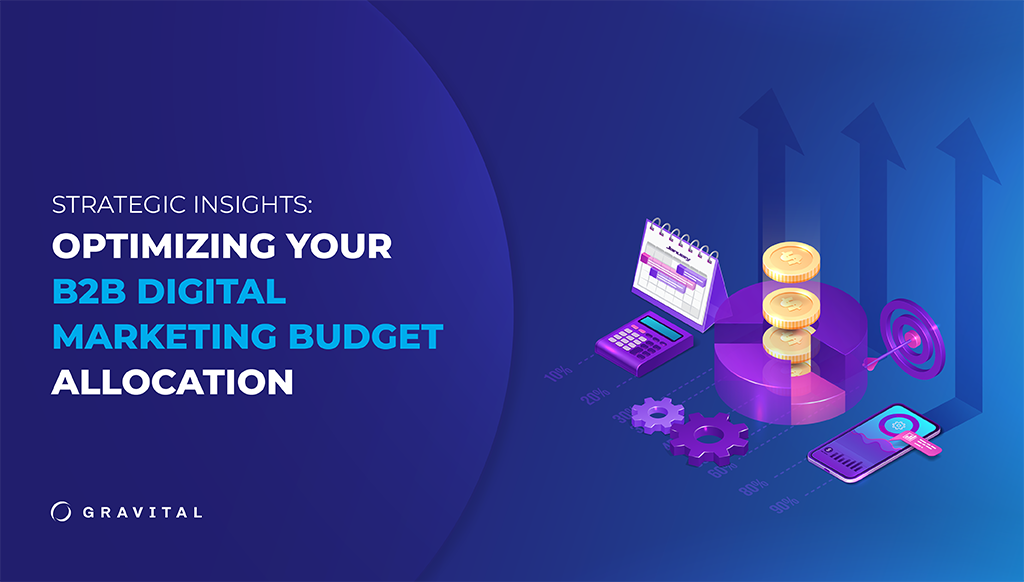You can’t meet goals that you don’t set, but setting goals is not enough. You have to work toward meeting them, and this is a process, not a one-time event.
In this process, it’s helpful to have markers that help you determine if you’re on the right track or going off course. That’s where objectives and key results (OKRs) and key performance indicators (KPIs) come into play. This goal-setting framework and performance-measuring methods help you monitor your progress as you work toward the finish line.
OKRs and KPIs are frequently confused and conflated, but there are some distinct differences between the approaches.
What are OKRs?
OKRs offer a framework for setting goals by defining clear objectives and measurable key results. Initially popularized by Google and Intel, OKRs are designed to push employees and companies forward toward accomplishing aggressive, ambitious goals.
OKRs are always quantifiable, timelined, ambitious and able to be objectively scored on a 0-1 or 0-100 scale. They’re usually used to set quarterly goals but can also be used for annual planning. An organization typically has three to five high-level objectives and three to five key results per objective. Key results are numerically graded to obtain a clear performance evaluation for the objective.
OKR Examples
Objective: Generate 1,000 qualified leads per month
Key Result 1: Increase conversion rate on landing pages by 10%
Key Result 2: Launch three successful content marketing campaigns with an average reach of 20,000 per campaign
Key Result 3: Reduce cost per lead by 5%
Objective: Increase average deal size by 15%
Key Result 1: Upsell additional products or services to 70% of customers
Key Result 2: Reduce sales cycle length by five days
Key Result 3: Achieve a customer satisfaction score of 90% or more
Objective: Increase brand recognition and awareness
Key Result 1: Increase media engagement by 20%
Key Result 2: Launch customer referral program by July 1
Key Result 3: Extend social media reach and visibility to two new target markets
Key Result 4: Expand the thought leadership program by placing guest articles on four industry-related sites with an Alexa ranking of at least 30,000
Download our Ebook: DATA-DRIVEN CULTURE: UNLEASHING THE POWER OF DATA FOR BUSINESS SUCCES
What are KPIs?
KPIs are metrics used to evaluate the success and performance of specific activities or processes. They’re usually quantifiable measures such as sales revenue, customer satisfaction scores or conversion rates.
KPIs should link to strategic objectives, direct where to focus resources, and be measured against targets. They can apply to projects, programs, products and a variety of other initiatives. KPIs should be tailored to your specific organizational objectives, how you plan on achieving them, and who can act on this information.
KPI Examples
Here are some common KPI examples for a variety of industries and company divisions:
- Marketing: website traffic, conversion rate, customer acquisition cost, customer lifetime value
- Sales: sales revenue, calls made, customer lifetime value
- Retail: revenue per square foot, same-store sales, sales per employee
- Technology: monthly recurring revenue, customer retention or churn, ticket resolution time
- Healthcare: patient wait time, average treatment charge, number of educational programs
- Human resources: attrition rate, employee performance, average recruitment time
Main Differences between OKRs and KPIs
OKRs and KPIs differ primarily in their purpose and application.
OKRs are broader and more strategic, serving as a compass for setting and achieving goals. They are dynamic, changing as objectives are met or priorities shift.
KPIs are more operational, measuring the performance of specific processes and activities. They tend to be more static, providing consistent metrics for performance evaluation over time.


How to Use OKRs
Using OKRs effectively involves setting ambitious but achievable goals, aligning them with the strategic direction of the business, and ensuring they are specific, measurable, achievable, relevant and time-bound (SMART). It’s also crucial to align individual OKRs with team or organizational OKRs to promote collective effort.
Tips for Using OKRs
- Align with company strategy: Ensure OKRs cascade seamlessly from organizational goals to departmental and individual levels.
- Set ambitious objectives: Clearly articulate what you want to achieve, pushing beyond perceived limitations.
- Define measurable key results: Ensure each key result is quantifiable and directly linked to the objective.
- Track progress regularly: Monitor progress towards key results and adapt strategies as needed.
- Be transparent: Encourage open communication and collaboration around OKRs across all levels.
Mistakes to Avoid
- Setting OKRs that are unrealistic, too vague or not aligned with the broader strategic goals of the organization.
- Overcomplicating OKRs with too many objectives or key results, as this can dilute focus and manageability.
- Focusing on activity metrics instead of broader outcomes can stifle creativity and initiative.
- Failing to regularly review and adjust OKRs to maintain momentum and adapt to changing priorities.


How to Use KPIs
Effective use of KPIs involves selecting metrics that are directly relevant to your business’s goals and processes. Financial KPIs might include revenue growth rate, while customer-centric KPIs could focus on customer satisfaction scores. Operational and sales/marketing KPIs could include product cycle time and lead-to-customer conversion rate, respectively.
Tips for Using KPIs
- Choose relevant metrics: Selecting KPIs that are directly tied to achieving specific goals and objectives.
- Track consistently: Monitor KPIs regularly to identify trends and adjust strategies as needed.
- Communicate: Share KPI data and insights transparently to inform decision-making across the organization.
- Avoid vanity metrics: Focus on actionable metrics that drive meaningful change, not just superficial indicators.
- Balance short-term with long-term goals: don’t prioritize short-term KPI performance over long-term strategic objectives.
Mistakes to Avoid
- Focusing on quantity over quality by prioritizing high numbers over understanding the context and drivers behind the data.
- Tracking too many KPIs can lead to confusion and distract from key priorities.
- Fixating on KPIs: relying solely on KPIs can stifle innovation and prevent exploring alternative approaches.
- Misinterpreting data by neglecting to consider context, that is, external factors that may impact performance.
Final Words
The proper use of OKRs and KPIs can significantly enhance a company’s ability to set realistic-yet-ambitious goals and measure performance and results. Understanding the unique value each process brings, and how each complements the other, enables companies and teams to achieve greater clarity, alignment and ultimately, success.
Are you OK with your OKRs?
Objective and key results, known as OKRs, is a fundamental tool for brands and marketers that allows them to successfully set, work toward and achieve their goals. OKRs are at the core of our business and the business we handle for our clients–ensuring focus, accountability and results in everything we do. If you haven’t yet taken advantage of OKRs to manage your business or need help with your growth and marketing strategies, we can help you. Talk to us.


